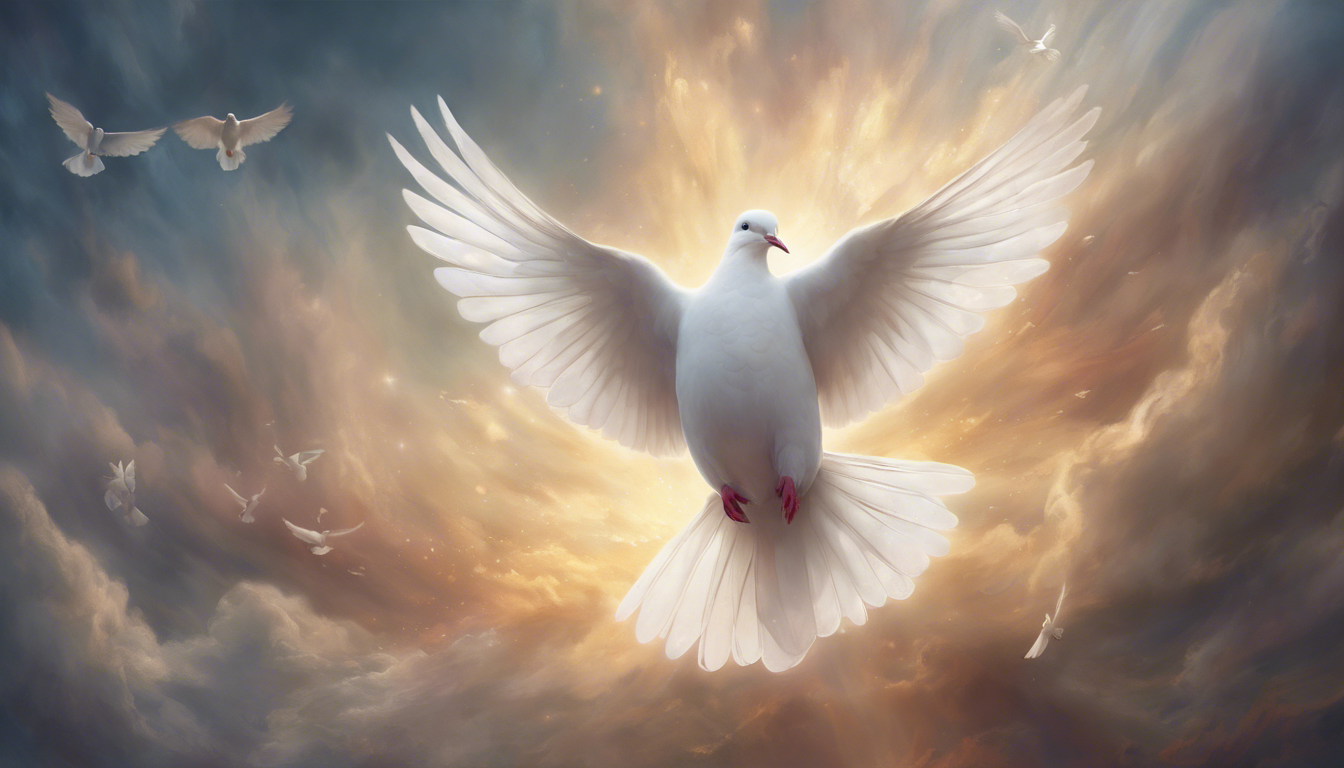Symbolism in the Bible
Throughout the pages of the Bible, symbolism is used to convey profound spiritual messages and teach important truths. Symbolism is a powerful tool that helps to deepen our understanding of God’s Word and the spiritual concepts it encompasses. From animals to colors, numbers to objects, the Bible is filled with rich symbolism that adds depth and meaning to the text. Let’s explore some of the key symbols found in the Bible and their significance.
The Symbolism of Animals
Animals play a significant role in the Bible and are often used as symbols to represent various concepts and traits. For example, the lion is often associated with strength and courage, as seen in the biblical references to “the lion of Judah.” The lamb, on the other hand, symbolizes innocence and purity, reflecting Jesus’ role as the sacrificial Lamb of God. The serpent, although often associated with evil, can also symbolize wisdom and cunning, as seen in the story of Adam and Eve.
The Symbolism of Colors
Colors hold symbolic meanings in the Bible and help to convey specific messages. For instance, the color white is often associated with purity and righteousness, symbolizing holiness and divine presence. Red represents blood and sacrifice, pointing to Jesus’ ultimate sacrifice on the cross. Blue symbolizes heaven and divine revelation, reminding us of God’s infinite wisdom and guidance. By understanding the symbolism of colors, we can gain deeper insights into the biblical narratives.
The Symbolism of Numbers
Numbers hold great significance in the Bible, symbolizing various spiritual concepts and principles. For instance, the number seven represents perfection and completion, as seen in the seven days of creation. The number twelve symbolizes divine authority and governance, represented by the twelve tribes of Israel and the twelve apostles. Moreover, the number forty is often associated with a period of testing or preparation, such as the forty days and nights Jesus spent in the wilderness. By paying attention to the numbers in the Bible, we can unravel hidden meanings and divine messages.
The Symbolism of Objects
Objects, both mundane and sacred, are often used as symbols in the Bible. The burning bush symbolizes God’s presence and divine revelation, as seen in the story of Moses. The ark of the covenant represents God’s covenant and presence among His people. Oil symbolizes the Holy Spirit and anointing, while bread and wine symbolize Jesus’ body and blood in the sacrament of communion. Through these objects, God communicates profound spiritual truths and invites us to experience His presence in tangible ways.
In conclusion, symbolism in the Bible adds depth and meaning to the scriptures. Whether through animals, colors, numbers, or objects, symbolism helps to convey spiritual concepts and truths that are often difficult to express in mere words. By understanding the symbols in the Bible, we can gain a deeper appreciation of its teachings and draw closer to God. May we continually seek to uncover the profound symbolism within the pages of God’s Word and let it guide us on our spiritual journey.
The Dove as a Symbol of Peace and Hope

In many cultures around the world, the dove is seen as a powerful symbol of peace and hope. This small, gentle bird has come to represent harmony, tranquility, and the potential for positive change. Let’s explore the history and significance of the dove as a symbol, and how it continues to inspire and uplift people today.
The Historical Significance of the Dove
The dove’s significance as a symbol of peace can be traced back to ancient times. In ancient Greece, for example, the dove was associated with Aphrodite, the goddess of love and beauty. According to mythology, Aphrodite would frequently transform into a dove and fly away from conflict, promoting peace and reconciliation.
In Christian tradition, the dove is most famously known for its role in the story of Noah’s Ark. After the great flood, Noah sent out a dove to find land. The dove returned with an olive branch, signaling the end of the flood and the beginning of a new era of peace and hope.
The Dove as a Symbol of Hope
Beyond its association with peace, the dove also represents hope. The dove’s ability to soar through the sky gives it a sense of freedom and possibility. Its gentle cooing and graceful flight inspire feelings of optimism and a belief in a brighter future.
The dove’s association with hope has also been strengthened through its depiction in various forms of art and literature. Artists often choose to portray doves in scenes of restoration, renewal, and healing. In literature, doves are often used as metaphors for hope, carrying messages of encouragement and resilience.
The Dove as a Contemporary Symbol
Today, the dove’s symbolism has extended far beyond ancient mythology and religious texts. It has become a widely recognized symbol of peace and hope, adopted by various organizations, movements, and individuals dedicated to promoting harmony and positive change.
For example, the dove with an olive branch is a frequently used symbol by peace activists and organizations advocating for non-violence. The use of the dove as a peace symbol gained international recognition in the 20th century, particularly during times of conflict, such as World War II.
Furthermore, the dove is often associated with environmentalism, as it represents the need for harmony between humans and nature. Many environmental organizations incorporate the image of a dove into their logos and branding to emphasize their commitment to protecting the planet and fostering a sustainable future.
Incorporating the Dove’s Symbolism in Daily Life
While the dove’s symbolism is powerful on its own, it can also serve as a reminder for individuals to actively pursue peace and hope in their daily lives. Just as the dove promotes unity and reconciliation, we can strive to resolve conflicts and promote harmony in our relationships and communities.
Additionally, the dove’s symbolism can inspire us to stay hopeful and resilient in the face of challenges. By embracing the qualities associated with the dove – gentleness, grace, and freedom – we can navigate difficulties with a sense of optimism and a belief in positive change.
Whether displayed as artwork, worn as jewelry, or integrated into personal rituals and practices, the dove is a powerful symbol that reminds us of the potential for peace and hope within ourselves and the world around us.
In conclusion, the dove’s representation as a symbol of peace and hope has a rich historical significance that continues to be relevant in contemporary society. Its gentle nature and ability to soar symbolize the human desire for harmony and a brighter future. By embracing the dove’s symbolism in our daily lives, we can contribute to creating a more peaceful and hopeful world.
The Dove as a Symbol of the Holy Spirit

The dove has long been recognized as a symbol of peace, love, and purity. In the Christian faith, it also holds significant symbolism as a representation of the Holy Spirit. Throughout history, you can find numerous biblical references and artistic depictions of the dove as a symbol of the third person of the Holy Trinity.
Biblical References
In the New Testament, the dove first appears in the Gospel of Matthew during the baptism of Jesus by John the Baptist. As Jesus emerged from the water, the heavens opened, and the Holy Spirit descended upon him in the form of a dove. This event marked the beginning of Jesus’ ministry, and the dove became a powerful symbol of the Holy Spirit’s presence and guidance.
In further biblical references, such as in the Gospel of John, Jesus refers to the Holy Spirit as the “Paraclete” or “Comforter.” This term is often associated with the image of a dove, emphasizing the Spirit’s role in bringing comfort, peace, and guidance to believers.
Artistic Depictions
The dove as a symbol of the Holy Spirit is a common theme in Christian art throughout the centuries. One of the most famous examples is found in Michelangelo’s painting, “The Creation of Adam,” on the ceiling of the Sistine Chapel. In this iconic image, God reaches out to touch Adam’s finger, and the space between their hands is filled with a group of angels, one of which is depicted as a dove. This portrayal represents the Holy Spirit as the divine presence connecting God and humanity.
Another well-known artistic representation is the dove hovering over Mary during the Annunciation. In this biblical event, the angel Gabriel appears to Mary and announces that she will conceive and bear the Son of God. The dove symbolizes the Holy Spirit’s role in bringing about the incarnation of Jesus.
Symbolic Meanings
As a symbol of the Holy Spirit, the dove carries several significant meanings. First and foremost, it represents purity and innocence. Just as a dove is gentle and pure in nature, the Holy Spirit embodies these qualities in guiding believers towards righteousness and holiness.
The dove also symbolizes peace, emphasizing the tranquility that comes from the presence of the Holy Spirit. In a world filled with chaos and conflict, the Spirit brings about harmony and reconciliation, both within the individual and in relationships with others.
Furthermore, the dove represents love and compassion. The Holy Spirit’s presence fills believers with a deep sense of divine love and enables them to show love and kindness to others. It prompts acts of mercy, forgiveness, and selflessness.
In Conclusion
The dove as a symbol of the Holy Spirit is a beautiful representation of divine presence, peace, purity, and love. Its biblical references and artistic depictions throughout history serve as a reminder of the Spirit’s role in guiding and empowering believers. As we embrace the symbolism of the dove, may we be open to the transformative work of the Holy Spirit in our lives.


Article written by Dera
Greetings, I am Dera, a 35-year-old individual with a deep passion for spirituality. Through my website, I aim to share my insights and knowledge to help others on their spiritual journey. Join me on the path to inner peace and enlightenment.